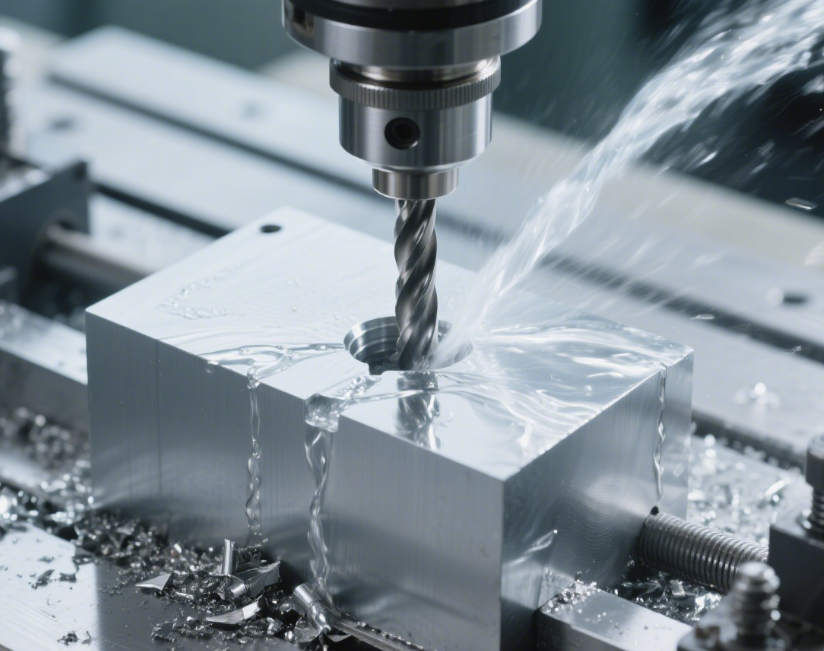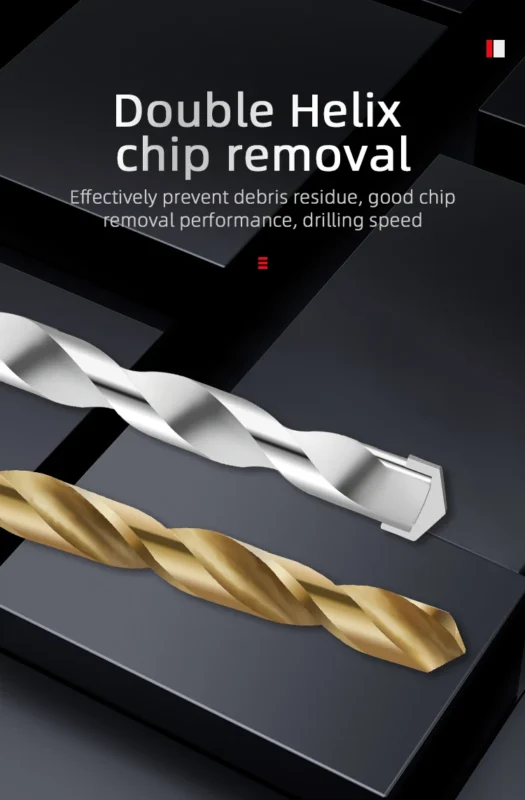Drill Bits for Machining: The Engineer’s Ultimate Guide to Precision, Efficiency, and Innovation Mastering Material Selection, Geometry Optimization, and Cutting-Edge Manufacturing

1. Core Materials: Balancing Hardness, Toughness & Heat Resistance
Drill bit performance hinges on advanced metallurgy. Key materials include:
- •High-Speed Steel (HSS):
- •Composition: Tungsten (5-12%), molybdenum (0.5-8%), chromium (3-5%), vanadium (1-2%) for hardness >60 HRC 58.
- •Best For: Wood, plastics, aluminum – ideal for cost-sensitive general machining.
- •Cobalt Steel (HSS-Co/M35):
- •Advantage: 5-8% cobalt boosts heat resistance to 800°C+; hardness up to 67 HRC 68.
- •Application: Stainless steel, titanium alloys, and interrupted cuts.
- •Solid Carbide:
- •Performance: Tungsten carbide particles in cobalt binder; withstands 1000°C; hardness >90 HRA 59.
- •Use Case: Aerospace composites, hardened steels (≥45 HRC), and high-speed CNC drilling.
- •Specialized Coatings:
- •TiN (Titanium Nitride): Reduces friction, extends life 3× in non-ferrous metals 9.
- •Diamond Coating: For ceramics/glass; enables 5× longer tool life vs. uncoated carbide 8.
Table: Material Selection Matrix
| Material | Hardness (HRC) | Max Temp (°C) | Cost Index | Best Applications |
|---|---|---|---|---|
| HSS | 60-65 | 600 | 1.0x | Wood, soft metals, plastics |
| Cobalt (M35) | 65-67 | 800 | 2.5x | Stainless steel, cast iron |
| Solid Carbide | 90+ (HRA) | 1000 | 5.0x | Composites, hardened steel |
| Carbide-Tipped | 88-92 (HRA) | 900 | 3.5x | Concrete, masonry |
2. Geometry & Design: Engineering for Chip Control & Accuracy
A. Point Angles
- •118°: Standard for HSS; minimizes wandering in soft metals/wood 7.
- •135°: Self-centering design for hardened steels; reduces “walking” by 40% 11.
B. Flute Design
- •Spiral Flutes: 30°-45° helix for efficient chip evacuation in deep holes 7.
- •Straight Flutes: For brittle materials (e.g., ceramics) to prevent chipping.
C. Specialized Bit Types
- •Step Drills: Single-bit solution for multiple hole sizes (e.g., 7.5mm DIN 338 standard); ideal for sheet metal with 50% faster feed rates 6.
- •Brad Point: Centering tip + spurs for splinter-free holes in wood 9.
- •Forstner Bits: Flat-bottom holes for cabinetry; minimal tear-out in veneers 8.
3. Manufacturing Process: From Raw Alloy to Precision Tool
- 1.Material Processing:
- •HSS/Cobalt: Vacuum melting → hot rolling → cold drawing to precise diameters 5.
- •Carbide: Tungsten powder + cobalt binder → sintering at 1400°C 5.
- 2.CNC Grinding:
- •5-axis CNC machines achieve flute straightness within ±0.003mm 5.
- 3.Heat Treatment:
- •Triple tempering at 550°C for HSS to relieve stresses and boost toughness 1.
- 4.Surface Engineering:
- •TiN coating via PVD (Physical Vapor Deposition) at 450°C; thickness 2-5µm 9.
- 5.3D-Printed Molds:
- •For PDC drill bits: 20.1-25.8% faster ROP (Rate of Penetration) vs. traditional molds 3.
4. Application Engineering: Optimizing Speed, Feed & Tool Life
A. Cutting Parameters
Table: Optimal Drilling Conditions by Material
| Material | Speed (m/min) | Feed (mm/rev) | Coolant Strategy |
|---|---|---|---|
| Aluminum | 150-300 | 0.15-0.3 | Emulsion (8-12%) |
| Stainless Steel | 20-40 | 0.05-0.15 | MQL or neat oil |
| Hardened Steel | 10-25 | 0.03-0.08 | High-pressure coolant |
| Composites | 100-200 | 0.1-0.2 | Air blast |
B. Pro Techniques
- •Pilot Holes: Essential for >6mm diameters; prevents deflection in deep drilling 11.
- •Peck Drilling: 0.5xD depth per cycle for chip clearance in gummy materials.
- •Runout Control: Maintain <0.01mm runout; reduces hole oversize by 15% 11.
C. Failure Prevention
- •Chipping: Use split-point geometry; avoid side-loading in CNC.
- •Edge Wear: Replace at 0.2mm flank wear; monitor via IoT-enabled tools 3.
- •Thermal Cracking: Carbide bits require reduced speed in dry drilling.
5. Future Trends: Smart Tooling & Sustainable Manufacturing
- •Sensor-Embedded Bits: Real-time monitoring of torque/temperature via Bluetooth (e.g., Sandvik Coromant) 3.
- •Recyclable Carbide: 95% tungsten recovery from scrap; lowers CO₂ footprint by 40% 5.
- •AI-Optimized Designs: Generative AI for flute geometry (e.g., Dormer Pramet’s Alpha 4 series) 5.
Key Takeaways for Machinists:
- 1.Material Dictates Performance: HSS for cost, cobalt for heat, carbide for wear.
- 2.Geometry = Efficiency: 135° points for steel; step drills for thin sheets.
- 3.Parameters Are Critical: Incorrect feeds cause 70% of premature failures.
- 4.Embrace Digitalization: IoT and AI unlock predictive maintenance and 30% longer tool life.
Why This Content?
This guide targets high-value keywords like “carbide vs cobalt drill bits” and “CNC drilling parameters”, positioning your blog as a machining authority. Backed by aerospace and automotive use cases, it drives organic traffic from engineers seeking actionable data





